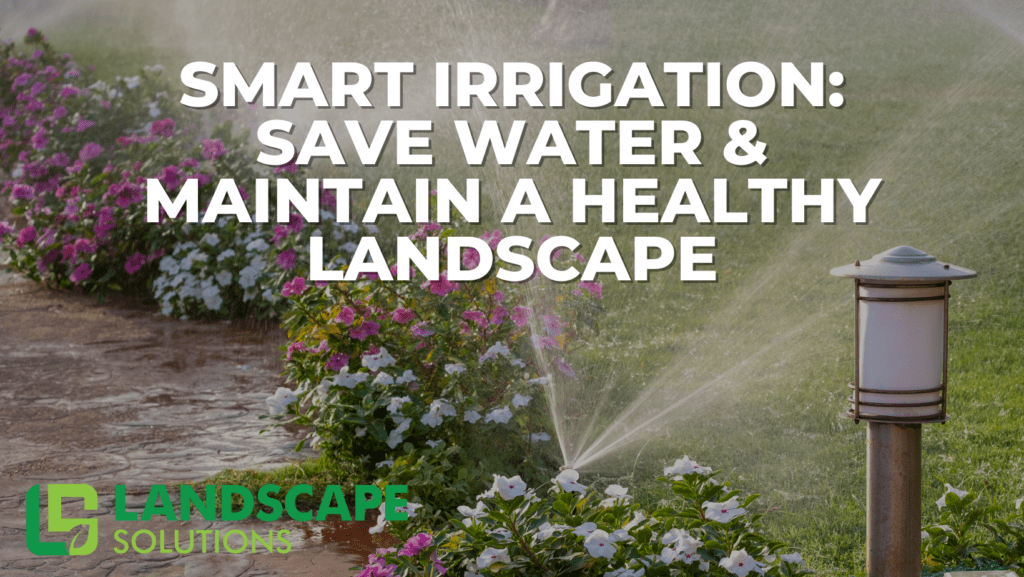
Efficient water management is critical for any successful landscape, ensuring that plants receive the moisture they need without undue waste. Traditional sprinkler systems often rely on set schedules that do not account for weather fluctuations, soil conditions, or plant requirements. As a result, landscapes can suffer from overwatering, leading to costly water bills and potential plant stress. Smart irrigation solutions offer an innovative approach to conserving water, reducing costs, and maintaining vibrant, healthy outdoor spaces.
Understanding the Importance of Smart Irrigation
Smart irrigation systems use advanced technology to deliver water precisely when and where it is needed. By automatically adjusting to current weather patterns, soil moisture levels, and plant water requirements, these systems minimize runoff, evaporation, and overwatering. The result is a well-hydrated landscape that thrives, even during periods of drought or extreme temperatures.
Key benefits of smart irrigation systems include:
- Water Conservation: Automated controls reduce excess watering, leading to significant savings on water bills.
- Improved Plant Health: Consistent and appropriate water delivery helps plants develop strong root systems and resist stress.
- Environmental Sustainability: Less water usage lessens the strain on natural resources, supporting eco-friendly landscape practices.
- Reduced Maintenance: Automated scheduling and monitoring decrease manual intervention, saving time and effort.
Essential Components of Smart Irrigation
Several elements work together to make modern irrigation systems both effective and resource-conscious. The following components are typically integrated to ensure optimum performance:
- Smart Controllers
- These devices serve as the “brains” of the irrigation system, using real-time weather data and soil moisture information to determine the precise watering schedule.
- Instead of relying on a static timer, smart controllers adjust to rainfall, temperature, and humidity levels, ensuring that water is provided only when necessary.
- This flexibility not only conserves water but also adapts to seasonal and daily weather fluctuations.
- Soil Moisture Sensors
- Placed at strategic points within planting beds or lawns, soil moisture sensors measure the amount of water in the soil.
- When soil reaches a certain dryness threshold, the irrigation system activates, delivering water until the sensor detects adequate moisture.
- By preventing overwatering, soil moisture sensors help sustain a healthy balance between hydration and oxygen in the root zone.
- Drip Irrigation
- Drip irrigation supplies water directly to the root zone of plants, minimizing evaporation and runoff.
- Tiny emitters or tubes release water at a slow, steady rate, giving plants consistent moisture without flooding the soil.
- This method is ideal for flower beds, vegetable gardens, shrubs, and trees, providing precise control over watering for each zone.
- Rain Sensors
- These simple but effective devices detect rainfall and automatically pause watering cycles when natural precipitation is sufficient.
- By avoiding irrigation during a rain event, the system conserves water and helps prevent oversaturation that can damage plant roots.
- Hydrozoning
- Hydrozoning groups plants with similar water needs into specific irrigation zones.
- Each zone receives a tailored watering schedule, ensuring drought-tolerant plants aren’t overwatered and moisture-loving species get the extra water they need.
- This approach maximizes water efficiency and nurtures plants according to their unique requirements.
How Weather-Responsive Systems Work
Weather-responsive irrigation systems rely on data gathered from local weather stations or on-site sensors. This information typically includes temperature, humidity, rainfall, and evaporation rates. By analyzing these variables, the system can calculate the exact amount of water a landscape needs.
For instance, if a region experiences several days of rain, the controller will delay the next scheduled watering. Conversely, during hot, dry spells, the system may increase watering frequency within certain zones. This responsiveness ensures that each area of the landscape remains at optimal moisture levels.
Importance of Proper Irrigation Design
Even the most advanced technology can be undermined by poor system design. A well-conceived irrigation layout ensures even water distribution and minimal waste:
- Nozzle Selection: Different sprinkler nozzles offer varied spray patterns and flow rates. Selecting nozzles compatible with each planting zone helps avoid overspray onto sidewalks or driveways.
- Head Spacing: Placing sprinkler heads too far apart can create dry patches, while crowding them leads to overlapping spray and waste. Correct spacing helps achieve uniform coverage.
- Pressure Regulation: Water pressure often fluctuates, leading to inconsistent spray patterns or misting. Pressure-regulating devices stabilize flow, ensuring consistent watering.
- Zoning Strategy: Dividing the landscape into zones based on sun exposure, slope, soil type, and plant water requirements is crucial for efficient operation.
Tips for Seasonal Adjustments and Maintenance
While smart irrigation systems automate many tasks, regular upkeep remains vital for long-term performance:
- Seasonal Reprogramming: Even with weather-responsive controls, some seasonal adjustments may be necessary. During periods of active plant growth, ensure that new plantings receive adequate water. In colder months, adjust schedules to prevent overwatering or ice buildup.
- Inspection and Cleaning: Periodically check for leaks, clogged emitters, or malfunctioning sensors. Promptly repairing any issues maintains the system’s efficiency.
- Winterization: In regions with freezing temperatures, draining or blowing out irrigation lines can prevent damage. Drip systems and sensors should also be protected from frost.
- Rainwater Harvesting: To complement smart irrigation methods, consider adding rain barrels or other harvesting systems. Stored rainwater can be utilized for manual watering or integrated into the irrigation system, further reducing municipal water use.
Matching Plants to Irrigation
Smart irrigation technology functions most effectively when paired with suitable plant choices. Opting for drought-tolerant or native species in certain zones can reduce water consumption and enhance ecological balance. Where lush lawns or moisture-loving plants are desired, grouping them together in dedicated zones ensures the rest of the yard remains water-wise.
Long-Term Environmental and Cost Benefits
By carefully managing water resources, homeowners not only save on utility bills but also contribute to broader environmental conservation. Reducing demand on local water supplies, decreasing runoff, and limiting soil erosion all result from efficient irrigation practices. Over time, a well-designed, smart irrigation system pays for itself in both financial savings and the health of the landscape.
Call to Action
For a customized, eco-friendly irrigation plan that keeps your landscape healthy and beautiful, consider partnering with Landscape Solutions. Their expertise in designing and installing smart irrigation systems ensures your property remains vibrant while conserving water. Call (615) 852-5009 or visit www.landscapetn.com to schedule a consultation. Embrace modern water-saving technologies and enjoy a lush, thriving landscape year-round.



